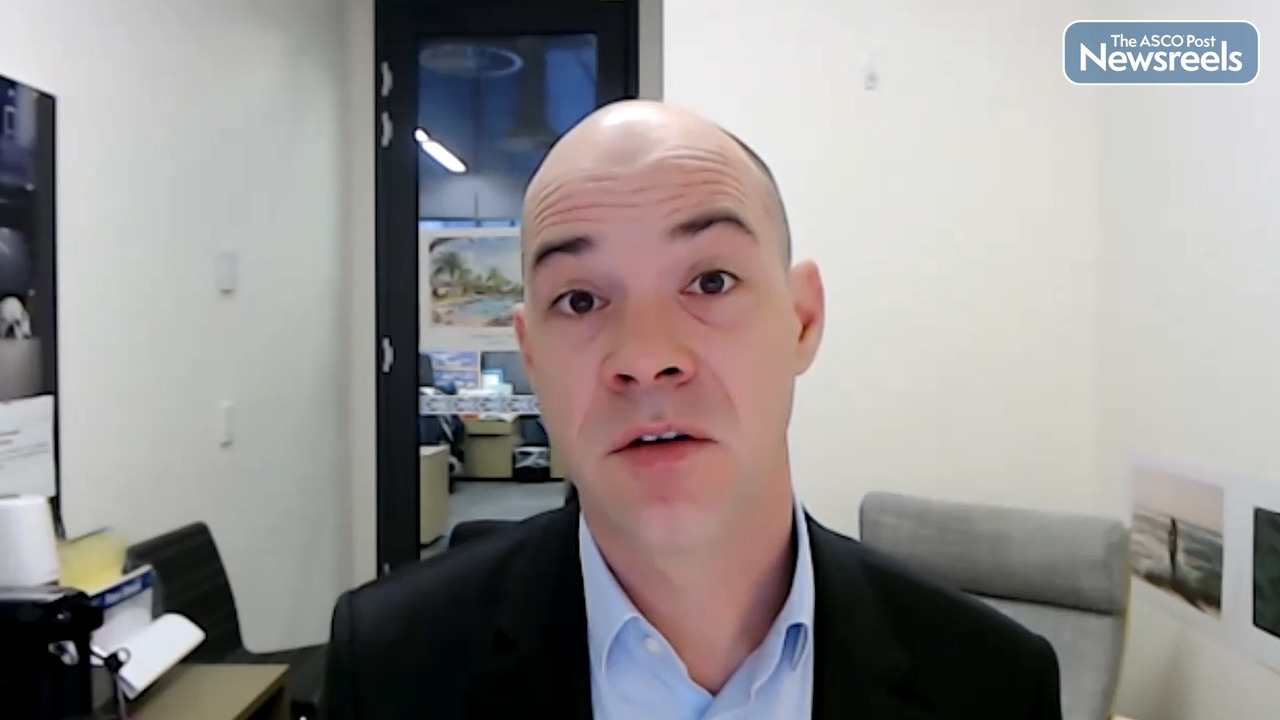Transcript
Disclaimer: This video transcript has not been proofread or edited and may contain errors.
ZUMA-7 is a Phase 3 prospective randomized clinical trial that compared face-to-face in patients with primary refractory and earlier relapse, high grade, large [inaudible 00:00:21] cell lymphoma, the standard of care. So conventional salvage chemotherapy, plus [inaudible 00:00:26] stem cell transplantation as consolidation, versus access cell. Patients were randomized one-to-one, no bridging therapy, with exception of short course corticosteroid was allowed, and no crossover for those patients that failed the standard of care treatment arm was allowed, either.
So the primary endpoint was event free survival. And the data that were presented at the last European Hematology Association meeting in June 2022, was referring to the specific results in those patients that were older than 65 years of age. The results of the global population of patients favored the use of CAR T in this specific situation with a better, event-free survival, a higher overall response rate, and a higher complete remission rate, and a trend to better overall survival, although it was a little bit too early to talk about differences in terms of overall survival.
So, the presentation was looking at the elderly population of patients and clinical characteristics between these elderly population of patients older than 65 years of age between patients being randomized in the CAR T-cell arm and the standard of care arm were quite similar. And if we go to the specific results, basically the efficacy of results were quite super impossible to the intention to treat population. So, CAR T-cell was able to offer higher overall response rate and a higher complete remission rate than the standard of care in the elder population of patients. Also, event survival was significantly better in the elderly population of patients being treated with CAR T. With respect to the standard of care treated patients, overall survival had a trend for benefit for the experimental arm in relation to the standard of care arm.
And we specifically had to look at the patient-reported outcomes. And patient-reported outcomes at the different time points that were analyzed at 100 days and 200 days, were significantly better for those patients that were treated with CAR T, in relation to the standard of care arm. So basically, the conclusions of this study is that for the elderly population of patients, so patients older than 65 years of age, CAR T-cells as second line treatment strategy gave better results in terms of efficacy, better quality of life with the different measures that were analyzed in relation to the standard of care, salvage chemotherapy, and auto stem cell transplantation.
And we talk about safety and toxicity issues. The toxicity profile, or the safety profile, of CAR T-cell in the elderly population of patients was quite similar to the one being seen in the intention to three population, maybe with a little bit higher incidence of grade three or plus CRS and grade three or plus neurological events in relation to the intention to three population. This study is specifically important because for the elderly population of patient with primary refractory or early relapse, there are basically no curative strategies. And they really represent a deep, unmet medical need.




